-
Benefits of Installing a New Garage Door
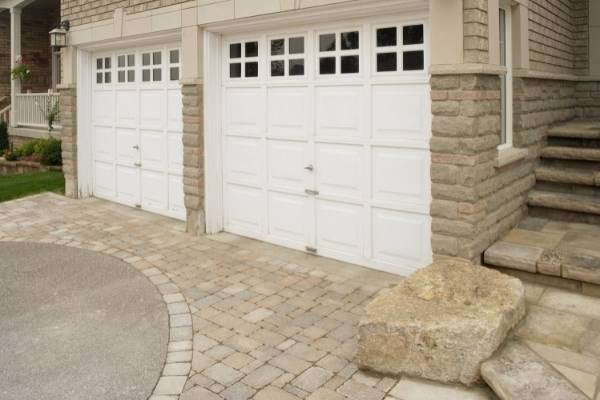
6 Advantages of Getting a New Garage Door
If you’re not already keeping up with the latest developments in garage door technology, then it might be time to take a look at your options. There are plenty of benefits that come with having a new garage door installed.
Comfort and Ease
Your garage door is a source of comfort for you and your family. The features and designs that come with a new garage door today will provide you with a sense of peace that comes from knowing your home is secure.
Energy Efficiency
Mirrors, lights, and other accessories used to keep your garage door closed are very energy-intensive. Replacing them with more efficient designs will save you money on utility bills every month.
Security
A new design garage door will not only make your home more inviting, but it will also help ensure the security of the people inside. The new designs and features come with added protection against crime. Contact Thomas V. Giel Garage Doors, Inc. today for more information about how these new features protect your home and your family.
Convenience
Your garage door is a source of convenience for you and your family. The latest designs of this type come with state-of-the-art features that will make it easy for everyone to get inside or leave the house quickly and efficiently.
Durability and Reliability
Currently, these new designs of garage doors come with several features that make them robust and reliable in even the harshest weather conditions. The new designs will ensure the longevity of your garage door for years to come.
Color
Today’s garage doors come in a wide range of colors. You won’t have to settle for the color that was installed when you built your home. You can now choose from various colors and materials that will increase your home’s value.
There are many benefits of installing a new garage door, such as better energy efficiency, protection, durability, and more. Homeowners should consider the benefits of the upgraded features of newer models. Reach out to Giel Garage Doors to learn more about installing a new garage door.
-
How to Choose the Perfect Garage Door to Match Your Home
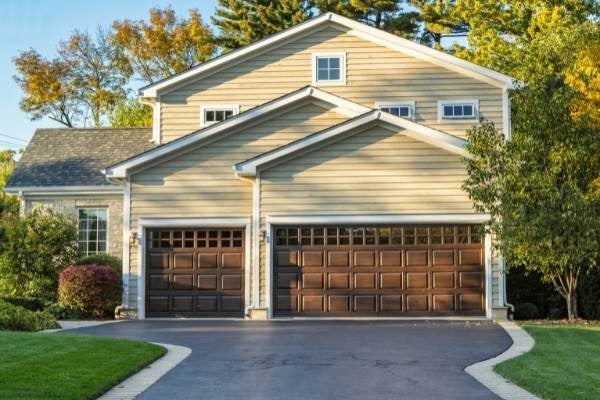
Choose the Right Garage Door for Your Home
Garage doors take up a large space in front of your home, so how your garage door looks matters a great deal for your home’s curb appeal. However, there are other aspects of your garage door you should also consider. Let’s take a look at the factors you should consider to choose the right garage door for your home.
Think About How You’ll Use Your Garage
You might park your cars in your garage, use it as a workspace, have family nights in your garage or use it as a living space. Regardless of how you use your garage, it’s a good idea to have adequate door insulation to avoid heat from entering your garage during the warmer months and prevent heat escaping during the colder months.
The R-value you choose for your garage door determines the amount of insulation you have. Even if you don’t spend a significant amount of time in your garage, your garage door’s insulation can affect the temperature of your home. If you spend a significant amount of time in your garage, you might want to consider getting a door that has windows.
Garage Style and Material
There are a number of styles and materials to choose from. You want to find one that matches the style of your home, but you also want a door that stands out from the rest of your home. For instance, if you have vinyl siding, you can choose a door that is made from vinyl. To make your garage door stand out, you can choose a door that is a different color from the rest of your home, which can match the trim of your house.
If you want to choose a different material on your door than the rest of your home, make sure it is painted the same color or a complimentary color. Wood, steel and faux wood are the most popular choices for garage doors. Steel garage doors typically have a higher R-value.
Get started choosing the right garage door for your home by contacting Thomas V. Giel Garage Doors, Inc.
-
How to Measure for a New Garage Door
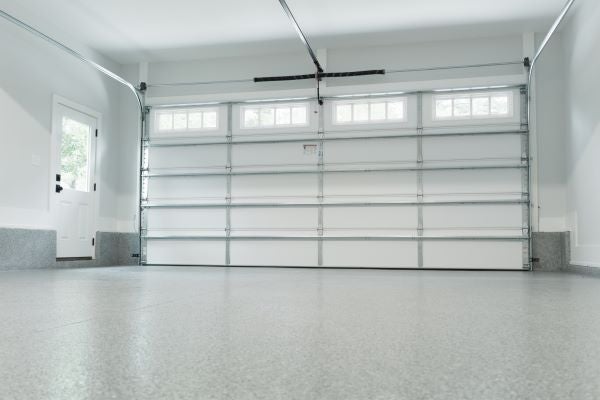
How to Take Accurate Measurements for a New Garage Door
Your choice of garage door will be greatly influenced by the specifications of your garage opening. This information focuses on the tools you’ll need to measure your garage in order to pick the right garage door in Pittsburgh, PA.
In order to measure your garage door, you’ll need the following items:
Measuring tape
Step ladder
Paper and pen
After gathering the required materials, follow these steps to accurately measure your garage door.
Step 1 – Height and Width
The first step is to determine the height and width of the door space. Make sure that you are measuring the width of the garage door area at its widest point. Measure the opening from top to bottom. Take note of the highest point of the area as well.
Step 2 – Side Room
Measure the areas next to the door openings if you are installing vertical tracks. If you have a specific design in mind, research what the installer or manual specifies to make sure the door will work in the area you have available.
Step 3 – Headroom
In this step, measure the headroom of the garage door to get a complete estimate for the total size of the garage door. With a step ladder, calculate the distance from the door opening to the ceiling.
Step 4 – Backroom
The final step is measuring the backroom, or in other words, the depth of your garage. Again, a professional installer of your garage door will give you the required measurements for the door’s backroom.
Other Considerations
There are specific factors to keep in mind when measuring a new garage door. For example, if you are using a door opener, you will need to find or install a new electrical outlet. Staircases and lights around the garage should be taken into account while installing the door or the opener.
Additionally, inspect the headers and jambs to make sure that they are stable and in proper working order. Take note of the ductwork, any pipes, and wires that may interfere with the operation of your new garage door. If you are replacing an existing door, compare the old door with the new one.
Contact our team at Thomas V. Giel Garage Doors, Inc. for all of your garage door needs.
-
4 Steps for When Your Garage Door Gets Stuck
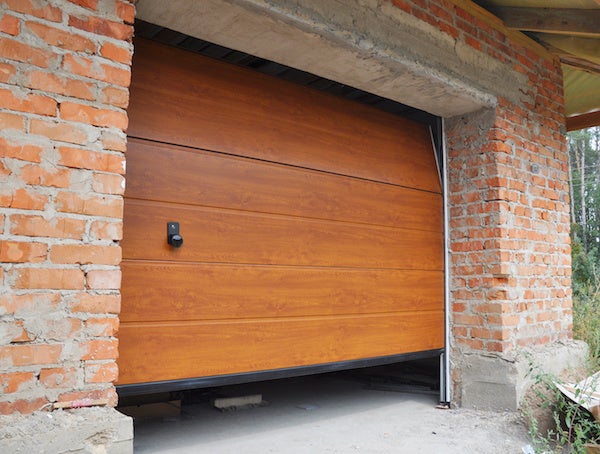
When a garage door gets stuck, it creates a major annoyance as well as a safety hazard. Homeowners ought to be able to open and close the door whenever they please. On occasion, however, the garage door simply won’t cooperate. Here are some steps you can take when your garage door gets stuck.
Confirm Power
A lack of power is typically the easiest issue to fix, so start there. Ensure the garage door opener is plugged into an outlet. If it is, test the outlet by plugging in another device (such as a nightlight) and seeing whether or not the new device is receiving power. If the car remote or keypad will not open the door but the interior button will, try a new set of batteries in either the remote or keypad as needed.
Check the Lock
The locking feature may have been inadvertently activated. Check the interior panel to make sure it is not “locked.” In lock mode, the door will not respond to remotes. The interior button will usually be lit to some degree. A steady light indicates that the door is unlocked while a flashing light usually means the door is locked. To lock or unlock a door, press and hold the “lock” button until the light pattern changes.
Lubricate Moving Metal Parts
Most hardware stores sell lubricants designed specifically for garage door openers. Use this type or another silicone-based lubricant. Spray a small amount of lubricant on top of the rails, at metal hinges, and along metal springs. During this step, also ensure bolts and other fasteners are secure. Lubrication is an important step in door maintenance and should be performed at least once every six months.
Test the Alignment
When a garage door becomes misaligned,it often struggles to open or close. If the door is stuck, try using the manual release to slide the door open or closed by hand. When properly lubricated, the door should glide easily and smoothly. If not, the door is likely misaligned, which will require professional attention.
Some home maintenance concerns can be handled without professional help. In the event of a garage door getting stuck, several steps can be taken at home before reaching out to a professional repair team. Follow these steps to diagnose and remedy the stuck garage door.
If your garage door is causing your problems, schedule a service call with Thomas V. Giel Garage Doors, Inc. experts. For more helpful information about maintaining your garage door, browse the Thomas V. Giel Garage Doors, Inc. blog.
-
Common Winter Door Problems and How to Fix Them
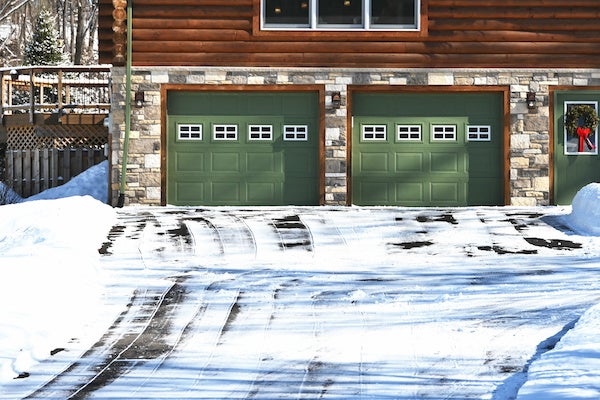
For people living in colder climates, winter can be harsh and destructive. Icy winters can produce a number of troubles. Car batteries are strained, walkways become slippery, and garage doors can start having problems. Many of these issues can be resolved without enlisting a professional. Check out these common winter door problems and how to fix them.
Ineffective Lubricant
In warm temperatures, lubricants are more runny and can move around easily. During the winter, lubricants become more dense, and heavy grease may not move easily enough to properly lubricate the garage door opener. Lubrication reduces the amount of work a motor must perform in order to open the garage door. If a heavy grease has been used, apply an even coat of a silicone-based lubricant. A local hardware store will most likely carry a product designed specifically for garage doors.
Frozen Garage Door
During periods of prolonged freezing, garage doors may become frozen and refuse to budge. Frozen garage doors are highly inconvenient, and they can cause further damage to the garage door opener. An immobile door strains the motor, and pieces of the door itself can break if the door is forced open. Where the door meets the ground, remove any existing ice with hot water and a snow shovel. Once the area is clear and dry-ish, apply ice melt as needed. Regular snow removal can prevent future icing.
Fatigued Metal Parts
Metal parts (such as springs) often face additional strain during winter months. More force is often required to open the door in the cold, due to less lubrication and other issues. The increased work can advance a metal part from being strained to outright fatigued. Cold temperatures often render moving parts brittle, and more likely to snap. To avoid potential damages, replace worn parts before they have a chance to break.
Winter can be a festive time for visits and winter sports. The cold season, however, is a time when extra precautions must be taken. Preventative measures can improve the lifespan of the door opener while preventing lockouts. If you run into any of these common garage door problems this winter, the solution may be rather simple.
If your garage door is causing your problems, schedule a service call with Thomas V. Giel Garage Doors, Inc. experts. For more helpful information about maintaining your garage door, browse the Thomas V. Giel Garage Doors, Inc. blog.
-
How Can an Insulated Garage Door Save You Money?
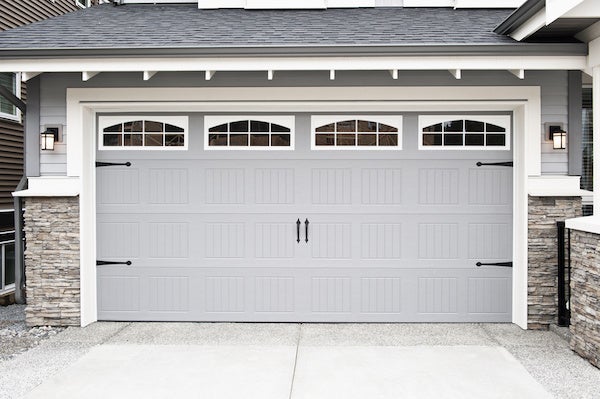
As the weather cools, many homeowners consider strategies for staying warm while saving money. Insulation is a common decision, often taking the form of double-paned windows, new weather stripping, or actual fiberglass insulation. One area where insulation can be particularly useful is the garage. Below are some ways an insulated garage door can save you money.
Energy Efficiency
Insulation is known to keep warm areas warm and cold areas cold. Walls in homes and garages are often filled with the stuff. The garage door more or less composes an entire wall of the garage, so insulating the door would significantly boost the energy efficiency of the garage as a whole. When the door between the home and garage is open, cold air from the garage mixes with warm air from the house. A warmer, better-insulated garage will bring warmer air into the home. This will lower the home’s heating costs. This principle is also true for air conditioning in the summer.
Secondary Savings
An insulated garage door can also save money by protecting garage-storage items. A car battery, for example, will have a longer lifespan in more moderate temperatures. This is true also for tires on bicycles and lawn mowers. Canned food and other liquids can be stored more confidently in a better-insulated garage. Wooden items, such as garden tools, are easier to maintain in milder conditions. In a well-insulated area, hard plastics like sleds or storage containers are less likely to crack. Additionally, insulated garage doors recoup an average of 72% of their value when the owner decides to sell the home.
Most homeowners actively pursue avenues for saving money. During the cold months, money-saving ideas tend to involve improving a home’s energy efficiency. One major component of a home is the garage. Adding an insulated garage door can increase heating efficiency. Insulated garage doors also offer protection for the garage’s contents, saving money and providing peace of mind.
For more helpful information on garage doors, browse the Thomas V. Giel Garage Doors, Inc. blog.
-
5 Trending Garage Door Colors
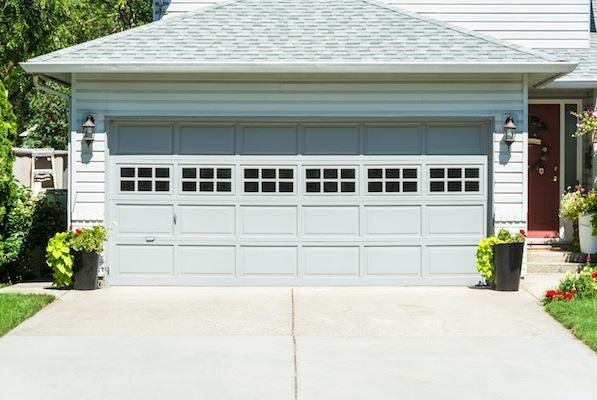
Your front door should not be the only part of your home that captures the attention of your visitors, your garage door should also make a great first impression and improve your home’s value. The garage door should be the perfect complement to the front door and not compete for attention. When selecting a color for your garage door, be sure to consider the colors of the other parts of your home, such as your roof and the front door.
White. White is by far the most popular color for garage doors. If you were to drive around and look at garage doors you would find that they are both crisp and bright. One of the few downsides of a white garage door is that they get dirty easily. Every little splatter of dirt will be easily shown upon the white surface.
Light Grey. This color is growing in popularity because of its ability to blend in and match with all other colors. It is a neutral color that keeps the attention on other parts of the home.
Black. Black is yet another example of an extremely popular color for a garage door. In the newer neighborhoods that are being built, you can find this darker color becoming more prevalent. To complement the black color, consider painting the window panes the same black color. Not only does the darker color help hide dirt and grime but is both elegant and trendy.
Beige or Taupe. This is a color that is not for everyone and will only work if you take into consideration the various colors around the home. If your home is made from beige bricks or other materials, then be sure to match the garage doors with it.
Walnut Brown. Some homeowners prefer colors that are warmer, but also enjoy the idea of a darker color. If this is you, a walnut brown may be the perfect choice. This can be a relatively inexpensive option, that looks like it has a higher price tag than it really does.
Whichever color you choose, be sure to avoid painting your garage door an off color or two separate colors. For more helpful hints and ideas, be sure to scroll though the rest of the Thomas V. Giel Garage Doors, Inc. blogs. We pride ourselves in assisting homeowners everyday to create the peace of mind that comes from the perfect home.
-
How Safe is Your Garage Door?
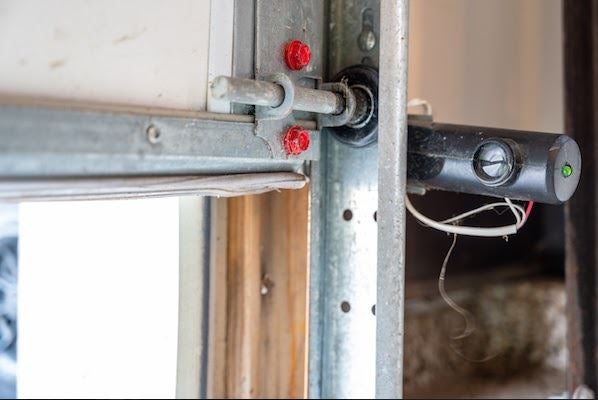
As a homeowner and the head of your household, it is your responsibility to make sure all the inhabitants of the home are safe and out of harm’s way. Whether it is black mold or stray wires, keeping up with hazards can become exhausting. But one danger that tends to be forgotten is your garage door. From faulty sensors to aging garage doors, these household staples could create serious problems. Here are some questions you can ask to determine how safe your garage door really is.
Is it Time for a Garage Door Replacement?
There are a lot of moving parts that must work together perfectly for a garage door to function properly. If the pulleys, track, cables, etc. are not working, it is time to replace your garage door. If you procrastinate, this can cause potential harm to you or your loved ones.
Are My Garage Sensors Operating Correctly?
It is always a good idea to periodically check your garage sensors for problems. If for whatever reason it has complications opening and closing or is behaving erratically, be sure to check the photo eyes for issues. More times than not the problem needs a minor fix that can be completed easily. But sometimes it is mandatory that a garage door installation professional visits your home and fixes the malfunction. In situations like these, it is often better to be safe than sorry. While homeowners may believe they’re saving money with a DIY project, if done incorrectly, these seemingly harmless projects can be dangerous for your home’s residents and vehicles.
How Do I Know if My Garage Door is Safe?
One easy way to test your door to see if it is working properly is to frequently place an object in front of the sensors to see if the garage door is shutting and opening the way it should. A garage door balance test can also be a beneficial way to determine the safety of a garage door. Release the emergency lever and lift the door, it should stay even and steady, but if it were to fall, it is time to get in contact with a Thomas V. Giel Garage Doors, Inc. technician to come and take a look.
There should be no higher priority than that of keeping your family safe from potential dangers. Your home should be a place of safety and peace of mind, this is why it is so vital that you continuously check your garage door to ensure it is safe. For more helpful information, visit the Thomas V. Giel Garage Doors, Inc. blog.
-
How to Clean Your Garage Door
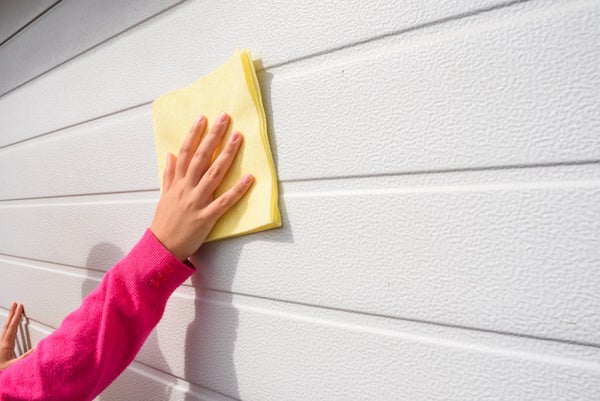
Like other home components, garage doors function best with regular cleaning and maintenance. In order to preserve beauty and functionality, homeowners are encouraged to wash their garage doors twice a year. In addition to better appearance and functionality, many warranties require doors to be cleaned and maintained regularly. Below are some strategies to safely and effectively clean your garage door.
Preparing for a Wash
Begin the process by removing dirt chunks with a dry cloth. This will minimize the amount of work required when the door is wet. Once visible dirt is removed, wet the inside and outside of the door with a hose. Using a gentle sprayer on the door will ensure the finish remains undisturbed. Prepare for the next step by gathering soft rags or a sponge. As with the gentle sprayer, non-abrasive rags will help maintain the beauty of the door for the maximum number of years.
Washing the Door
Using a cleaning bucket, mix water and a gentle cleaner. Car wash soap and dish soap are commonly used. Many homeowners clean the interior of the door then move to the outside. With a soft rag or sponge, begin washing the door with the soapy water, including the weatherstripping. Once dirt and grime are removed from all areas, gently rinse off the soapy water using a hose. Bleach water can be used on non-wood doors to treat problem areas. Rinse the bucket, rags, and door thoroughly before using bleach water.
Finishing the Process
After the door is satisfactorily clean, allow it to dry completely. Similar to the car washing process, the cleaning of garage doors should end with a wax finish. For wood doors, a wood finish is to be used in place of wax. If there are any places on the wood door where the existing finish is worn or absent, correct this (often with primer) before applying the new coat of finish. For non-wood doors, a liquid car wax is commonly used. As the wood finish or wax dries, cover all exposed parts of the door, which includes the interior and exterior of the bottom piece.
Maintaining a clean garage door can amplify the beauty of a home. Performing a twice-yearly washing and waxing will, in many cases, fulfill the warranty requirements set by the manufacturer. For the owner, regular cleaning will save money by minimizing repairs, lengthening the door’s lifespan, and, often, maintaining the manufacturer warranty. The steps above outline an effective approach to augment the appearance and functionality of garage doors.
For more information about maintaining your garage door, visit the Thomas V. Giel Garage Doors, Inc. blog.
-
A Guide to Changing Your Garage Door Remote Batteries
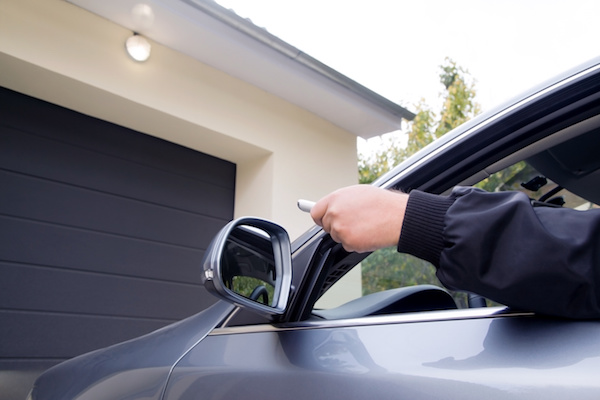
Man by using remote garage opens in a cloudy day
From the outside, garage doors are typically opened using either a keypad or remote. The remote is an especially convenient way to open the garage door while remaining in the vehicle. Over time, remote openers may begin to require several presses in order to open the door. In such instances, the solution may be as simple as replacing the battery. Below are three simple steps for changing your garage door remote batteries.
Step 1: Remove the Battery Cover
On many remote garage door openers, the battery cover is often located on the back of the device. In this case, the cover may be opened by pressing the back piece of the device and sliding it back. Other remotes have covers with no discernable battery covers. These can usually be opened by splitting the remote into two pieces. A small screwdriver will assist with battery covers attached with a screw.
Step 2: Identify the Battery Type and Obtain a Replacement
Remove the battery from the remote. Most may easily be pulled or popped out of the remote. Many remote batteries are small, round, silver in color, and flat on the top and bottom. Such batteries come in specific sizes. The battery will have the type and size identified on the side as a series of numbers. A safe option is to simply take the exhausted battery to a store where the staff will provide the appropriate replacement.
Step 3: Replace and Reprogram
Place the replacement battery or batteries in the remote, facing them in the correct direction as indicated on the remote. Replace the cover using the reverse process which was used to remove it. Once the battery has been replaced, the remote may need to be reprogrammed to operate correctly with the garage door. The manufacturer of the remote provides instructions for reprogramming, which can be accessed online.
Garage door remote openers can often be rejuvenated by inserting a new battery or batteries. This process can be accomplished by removing the cover, replacing the battery, and reprogramming the remote. Following these steps as listed above, batteries can be replaced quickly and easily, allowing the user to enjoy the remote as it is designed to function: consistently opening the garage door on the first attempt.
For more information about how to maintain your garage door and opener, visit the Thomas V. Giel Garage Doors, Inc. blog.
